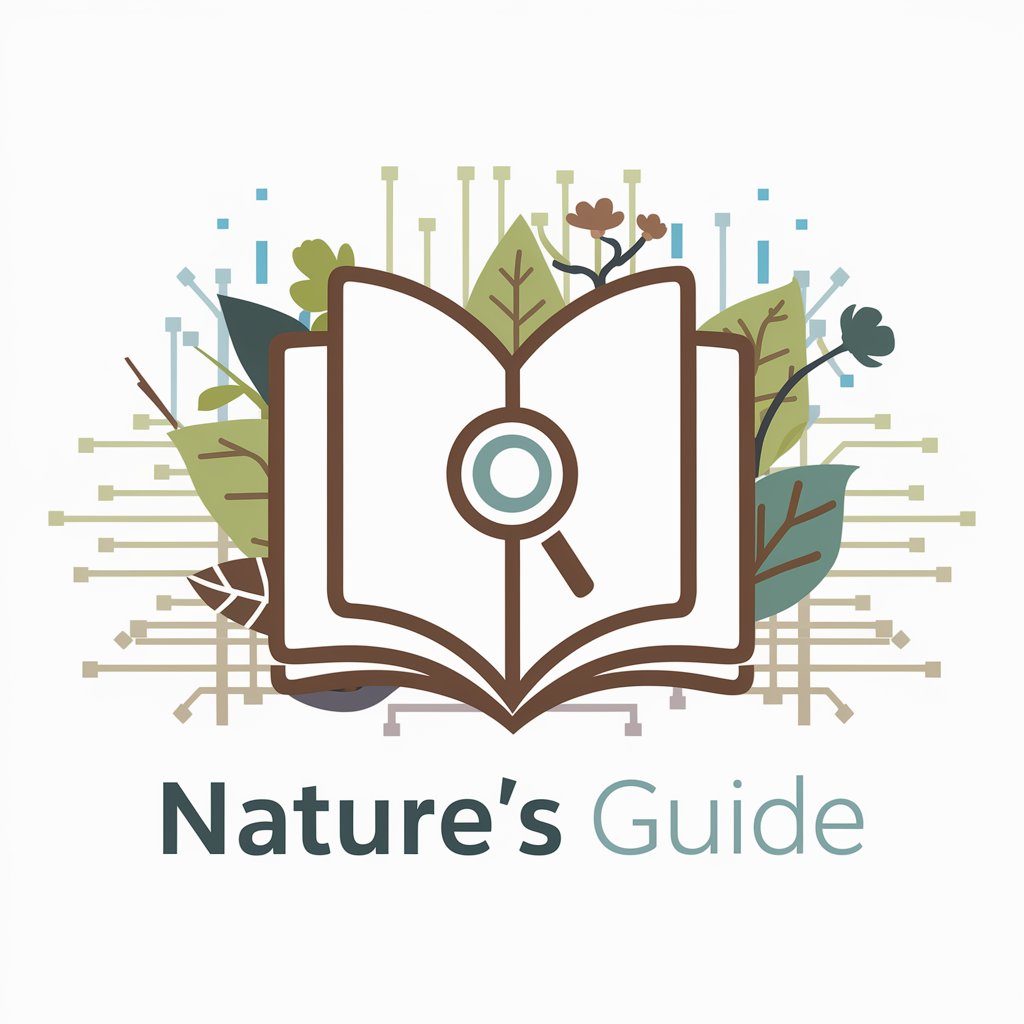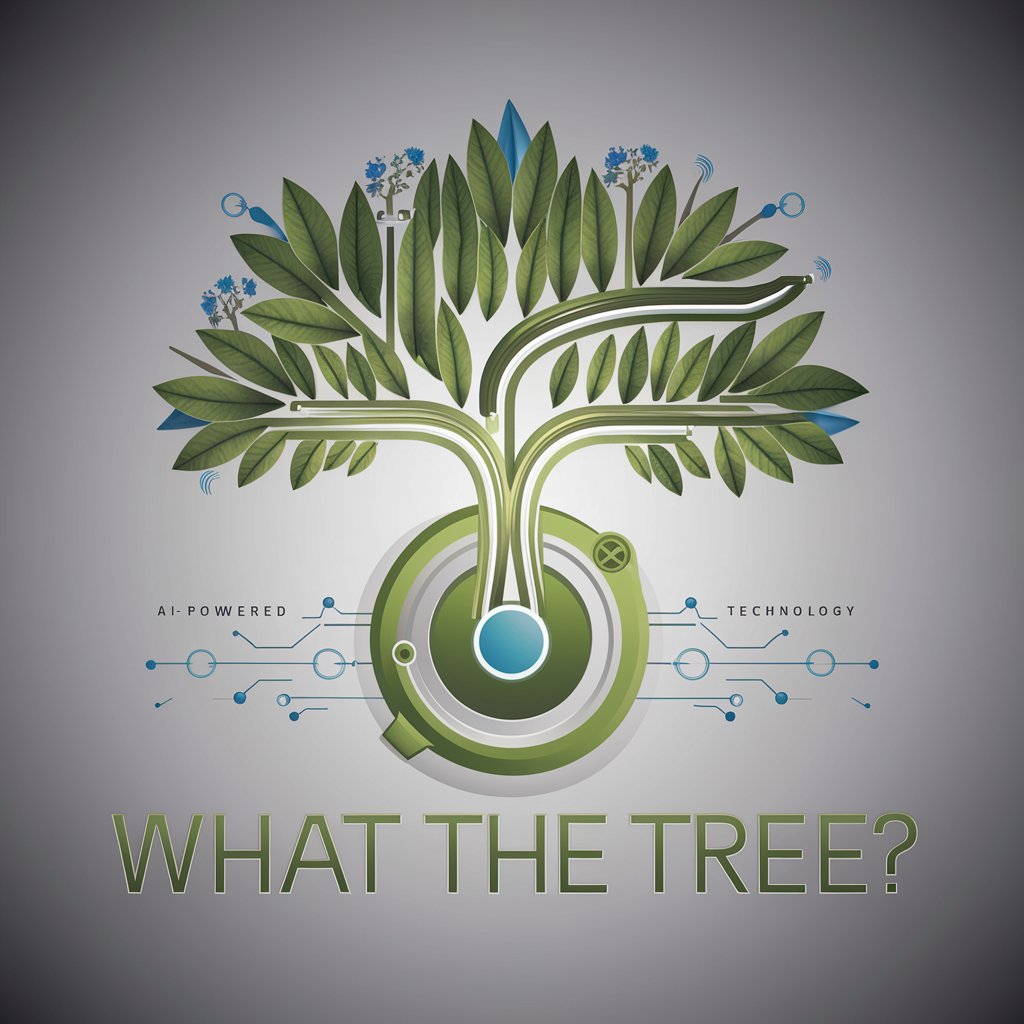
Tree and Plant Identification - Tree & Plant Identification

Hi there! Ready to discover some amazing trees and plants?
Discover Nature's Diversity with AI
Can you help me identify a plant with large, glossy leaves?
What kind of tree has bark that peels in thin layers?
I'm curious about a flower with vibrant, multicolored petals.
How do I care for a plant with small, white flowers and dark green foliage?
Get Embed Code
Understanding Tree and Plant Identification
Tree and Plant Identification, as a specialized GPT model, is crafted to assist users in identifying various tree and plant species through detailed analysis of descriptions or images. The design purpose of this model is to provide accurate, informative insights into different species, offering information on their characteristics, care tips, and interesting facts. For example, a user might upload a photo of a leaf with unique markings, and Tree and Plant Identification could not only determine the species, such as identifying it as Acer palmatum (Japanese Maple), but also provide details about its growth habits, optimal care conditions, and any special significance it holds in horticulture or culture. Powered by ChatGPT-4o。

Key Functions and Applications
Species Identification
Example
Identifying a Quercus robur (English Oak) from a close-up image of its leaf and bark.
Scenario
A user takes a photo of a tree they find during a hike. They are curious about its species. By analyzing the image, Tree and Plant Identification provides the species name, description, and ecological value.
Care Guidance
Example
Offering care tips for a Ficus benjamina (Weeping Fig) including light requirements and watering frequency.
Scenario
A plant owner uploads a photo of their indoor plant, seeking advice on how to revive it. The service identifies the plant and provides tailored care instructions based on its specific needs and common issues.
Historical and Cultural Information
Example
Sharing the cultural significance of Ginkgo biloba (Ginkgo tree) in Asian traditions.
Scenario
A student is researching plants with historical significance for a school project. They inquire about Ginkgo biloba, and Tree and Plant Identification offers detailed information on its historical use, symbolism, and importance in various cultures.
Target User Groups
Hobbyist Gardeners
Individuals with an interest in gardening, seeking to expand their knowledge of plant species, care techniques, and landscape design. They benefit from using Tree and Plant Identification services by receiving detailed care instructions and ideas for garden enhancement.
Environmental Educators and Students
Teachers and students involved in environmental science or botany courses. These users can utilize the service to identify species in the field, learn about plant ecology, and enrich their educational content with accurate information on various plants and trees.
Conservationists and Researchers
Professionals and enthusiasts working in conservation, forestry, or botanical research who require accurate species identification and information to support their work in ecosystem management, species conservation, and scientific studies.

Guidelines for Using Tree and Plant Identification
1
Visit yeschat.ai for a free trial without login, and no requirement for ChatGPT Plus.
2
Provide a clear description or image of the tree or plant you wish to identify. This can include details about leaves, flowers, bark, fruit, or overall shape.
3
Specify any additional information or context, such as geographical location, surrounding flora, or specific concerns (e.g., disease, care tips).
4
Review the information provided by the AI, which includes identification, care tips, and interesting facts about the species.
5
Use the tool for various applications like gardening advice, academic research, environmental conservation, or personal curiosity.
Try other advanced and practical GPTs
GPT Genius
Empowering Creativity and Productivity with AI

Predict stock prices
AI-Powered Stock Market Insights

WordCraft
Enhancing Your Words with AI

Art Assistant
Elevate Your Art with AI-Powered Insights

Adoption
Empowering Adoption Journeys with AI

Sales Pitch Prodigy
Craft compelling pitches with AI

Quantum Thinker
Unleash Creativity with AI Power

Mother
Empowering Motherhood with AI

喵酱
Engage with your AI cat-girl companion.

Post Office
Empowering Your Postal Experience with AI

URL update with h1,h2,h3,h4
Optimize Headings, Boost SEO with AI

SEO Specialist Helper
Elevate Your SEO with AI

Frequently Asked Questions about Tree and Plant Identification
Can this tool identify any tree or plant from a photo?
While the tool is capable of identifying a wide range of trees and plants, identification accuracy depends on the clarity and detail of the photo provided.
Does this tool provide care instructions for identified plants?
Yes, once a plant is identified, the tool can offer care tips and guidelines specific to that species.
Is this tool useful for academic research in botany?
Absolutely. It can assist in species identification and provide detailed botanical information, beneficial for academic studies.
Can the tool diagnose plant diseases?
The tool can offer insights into common symptoms and potential diseases based on the visual information provided, but it's not a substitute for professional diagnosis.
How does the tool handle rare or exotic plants?
The tool has a vast database, but in cases of extremely rare or exotic plants, it might provide a close match or request additional information for precise identification.





